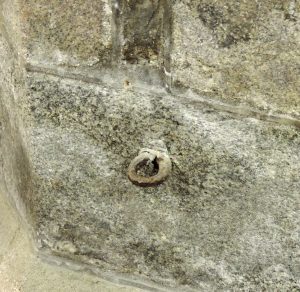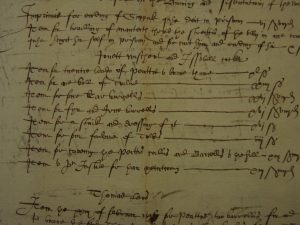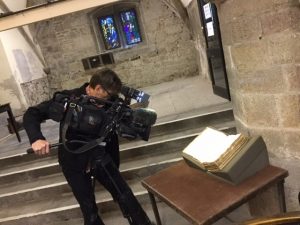In the last few years of the 16th century there was great concern about the presence of witches in society. In part this arose because the king had written a book about it, but there had also been some poor harvests and various epidemics, so witches were convenient scapegoats. Aberdeen did not escape this hysteria where the first ‘witch’ was arrested in 1596. He was John Gordon, sometimes known as Williamson, and was imprisoned in the vault of St Nicholas Kirk on the charge of being ‘a manifest and open witch’.

It seems strange today that part of a church building should be used as a prison. The vault is now known as St Mary’s Chapel and had been built nearly 150 years earlier and dedicated to St Mary, the mother of Jesus. After the Reformation in 1560, the worship of Mary was no longer considered a suitable part of the new church practice. Thus, this part of the building became redundant and other uses had to be found for it. Over the years there were many, with its use as a prison being one. The spire of the Kirk was also used to house witches.

A surprisingly large number of people were accused of witchcraft. In total 80 were put on trial; 72 were found guilty of which 26 were executed and 8 were branded. All this information is included in the Guildry Records of Aberdeen which are held in the City Archive. These are remarkably complete and have received UNESCO recognition for their importance. The records about the witches are extensive, with full details of each trial and any subsequent execution. To assist with their imprisonment, an iron ring together with appropriate shackles was purchased, fitted into the wall of St Mary’s Chapel and used to chain the witches. The cost for this is also included in the written records. The first photograph shows the ring, which can easily be overlooked as it is relatively insignificant. The records of each execution itemise the price of each material used in the burning, such as the stake, the pitch, the rope etc. Gruesome reading! Part of these hand written records are shown in the second photograph which records the cost for burning Isobel Cockie. Perhaps it is worth noting that the witches were executed before burning.

BBC Scotland did a short report about the records last June (accessible at http://www.bbc.co.uk/news/uk-scotland-36488855) and the current (January/February 2017) issue of the magazine History Scotland has a two page article about the history of the building and the witches’ trials. During the filming by the BBC, reporter Fiona Stalker took a few photographs. The third photograph shows the filming of the archive document in St Mary’s Chapel. This is just Volume 1 of the Guildry Accounts. What is not shown is that the accounts for the costs of burning are signed off by the Provost of the day, Alexander Rutherford. Also in St Mary’s Chapel is the ‘Provost’s loft’ created less than a decade later by the same Alexander Rutherford when he was again Provost (see blog of 18th February 2014 to learn more about him and to see the panel with his name on).
Thanks to Martin Hall, City Archives, for some of the detailed information and the photograph of part of the records.